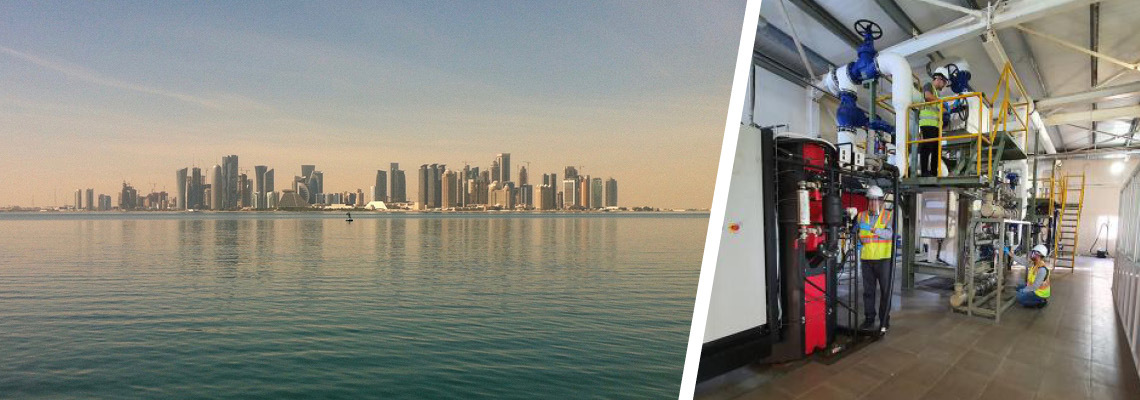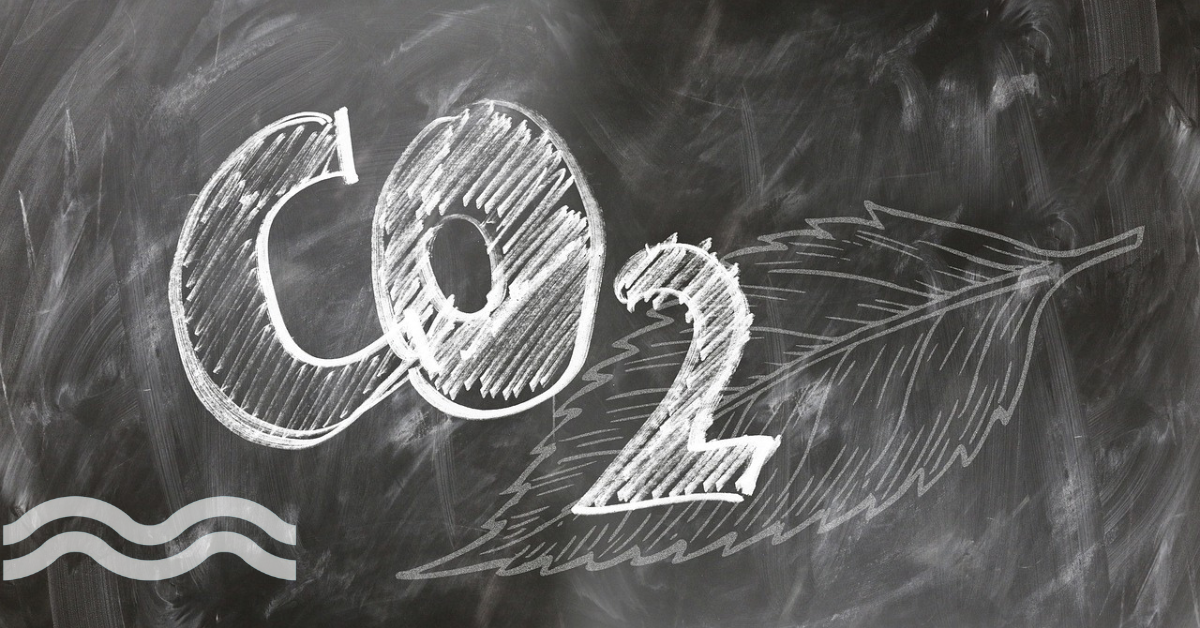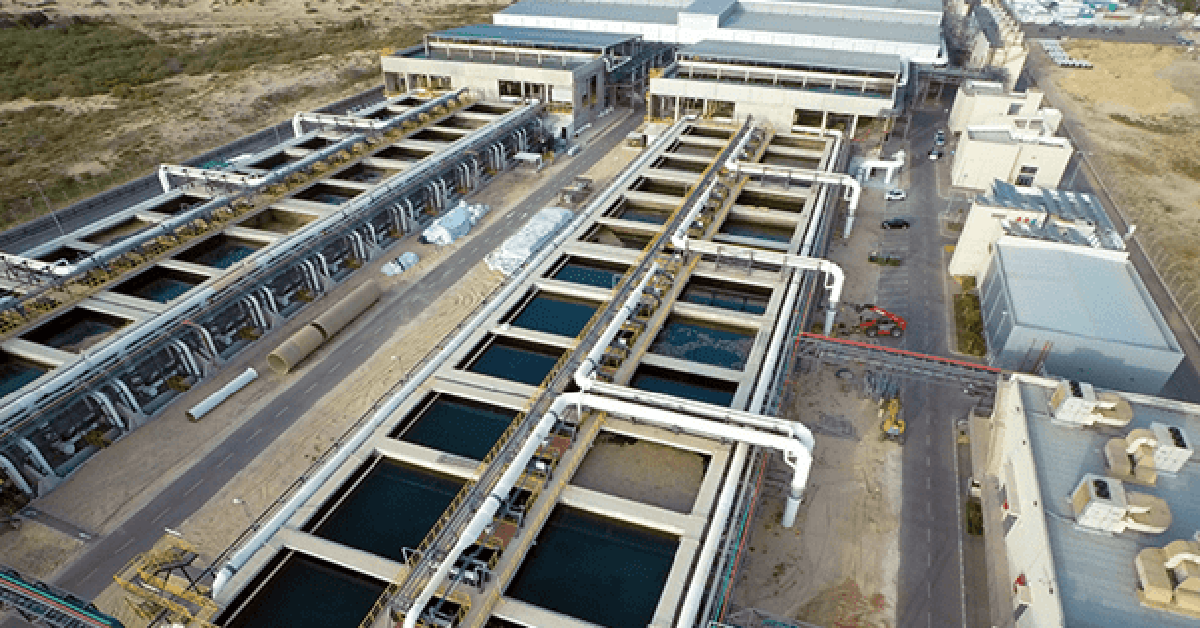Qatar desalination trial provides hope for thermal innovation
A pilot desalination plant that combines Multi-Effect Distillation with absorption vapour compression could prove there's room for innovation in the declining thermal space.
Still room for thermal innovation?
"Thermal desalination is already out of the game.” That was according to senior desalination thought leader Dr Corrado Sommariva, who recently spoke to Aquatech Online concerning news of a membrane push in the UAE.
Commenting on the membrane vs. thermal desalination discussion, he said seawater reverse osmosis (SWRO) plants are "less invasive, they require less land footprint and have a lower water footprint".
Yet, despite the dominance of SWRO, Qatar is putting its hopes on a new pilot desalination project that shows there’s still room for innovation in the declining thermal space.
“To date trials have shown reportedly showed signs of higher efficiency than conventional technology.”
The project combines Multi-Effect Distillation (MED) with efficient absorption (AB) vapour compression. Called MED-AB, the solution is being developed by Qatar Environment and Energy Research Institute (QEERI), part of Hamad Bin Khalifa University (HBKU).
Installed by QEERI in Dukhan, the development is part of a 20-year collaboration agreement with water and power producer Qatar Electricity & Water Corporation (QEWC).
To date, trials have shown reportedly showed signs of “higher efficiency than conventional technology - both in energy recovery to reduce thermal energy consumption and cost-effectiveness”.
Qatar’s long history with thermal desalination
Historically lacking natural water resources, Qatar has been a bastion of thermal desalination in the Middle East, alongside Saudi Arabia and the United Arab Emirates (UAE).
MSF/MED technologies have been seen as solid, reliable technologies well known to the water and power authorities in the region.
Part of the reason for the reliance is due to widespread, co-located water and power plants, which supply excess, high-temperature heat into the desalination processes.
One example is the Ras Abu Fontas water and power project, which has provided up to half of the country’s water supply. Dating back to the 1970s, the site has been continually upgraded and expanded over the years.
Promise for high salinity waters
Designed and developed by QEERI’s Water Center, the latest pilot plant has a nominal capacity of 25-50 m3/day.
The team estimates that the new pilot requires just 4.5 kWh/m3 to desalinate the high concentration seawater (57,000 ppm) of the Dukhan coast, west of Qatar. This compares to conventional thermal desalination technologies, such as multistage flash (MSF), which can require up to 12 kWh/m3.
“QEERI believes the new solution shows promise for high salinity waters.”
QEERI believes the new solution shows promise for high salinity waters, where membrane-based technology “is not efficient and suffers fouling problems”, HBKU said.
For example, the salinity on the east coast of Qatar is just 43,000 ppm, while the Mediterranean is around 35,000 ppm.
The pilot plant displays 40 per cent lower heating steam consumption and 55 per cent lower pumping power than the existing traditional MED-TVC (thermal vapour compression) technology deployed at the Ras Laffan Plant, researchers said.
Unique features
QEWC provided the space and other operational requirements such as electricity, service water, full access to the seawater intake, and brine outfall facility.
Dr Abdelnasser Mabrouk, senior scientist at QEERI, and project lead for the MED pilot plant, said: "The project started with a small 3D model, and we worked with our team to reach the pilot plant stage. It has definitely been a long but rewarding journey, from preparing the mechanical design to scouting for and procuring the material, and finally the manufacturing, which was done overseas.”
The MED pilot plant has several unique features. The need for external heating steam has been reduced by relying on an efficient absorption vapour compression system to allow for the reuse of the generated vapour in the last effect.
The heat rejection condenser has accordingly been eliminated, which in turn reduces the intake seawater and outfall of plant brine flow rate compared to traditional MED desalination plants.
One of the technical features of the internal evaporator design is a new tube arrangement that creates a new vapour route to do away with the need for the traditional demister. The result is a reduction in the footprint and layout of the desalination plant by 65 per cent.
HBKU said: “The environmental impact of dumping huge amounts of thermal energy back into the sea, which may affect marine life, is minimized. The innovative solution not only saves on energy consumption but also would reduce the plant's capital investment, covering the intake/outfall civil work and construction, among other areas.”
Aligning innovations
Dr Jenny Lawler, senior research director of the Water Center at QEERI, said “advanced MED technology development” has the potential to reduce “energy consumption and water unit cost”.
The novel evaporator design, based on the low-temperature MED technology, shows a potential solution for the industrial application of high salinity by-product and solar desalination.
“Qatar’s water security relies on the alignment of innovations with industry needs.”
Dr Marc Vermeersch, executive director at QEERI, added: “Qatar's water security relies on the alignment of innovations with industry needs, and at QEERI we focus on addressing the real challenge faced by existing desalination plants in the short term while continuing to develop reverse osmosis technology, as well as the emergent technologies such as membrane distillation and forward osmosis and exploring possible hybridization techniques.
“The demonstration of nationally developed innovations at pilot scale and securing patent protection enhances Qatar’s intellectual property status and supports its position as a knowledge-based economy,” he added.
Related content
- UAE to phase in more membranes in swro desalination push
- Does size matter? Meet ten of the world's largest desalination plants
- Paul Buijs: Busting four desalination myths
We promise never to send you spam and you can unsubscribe at any time!





